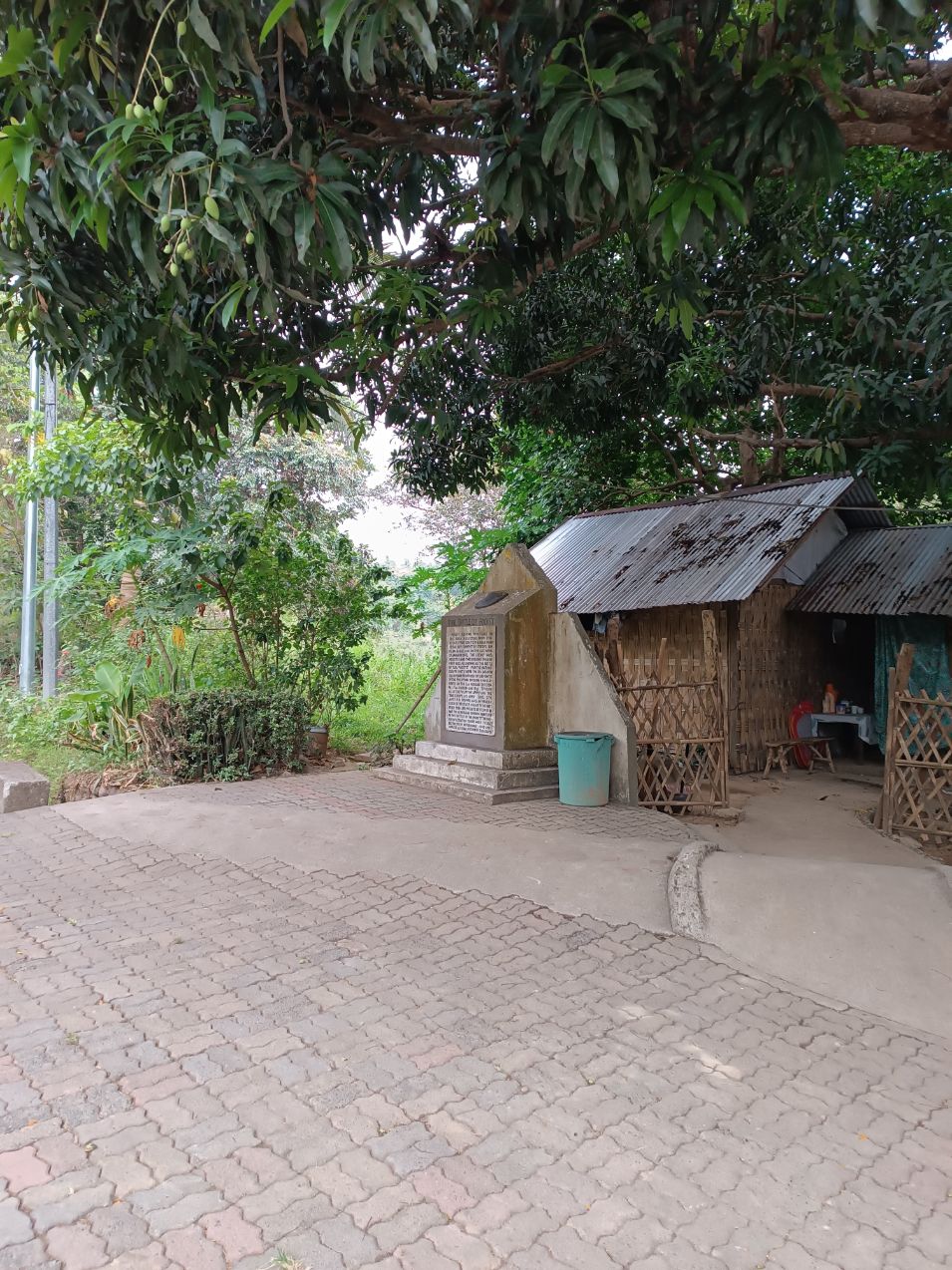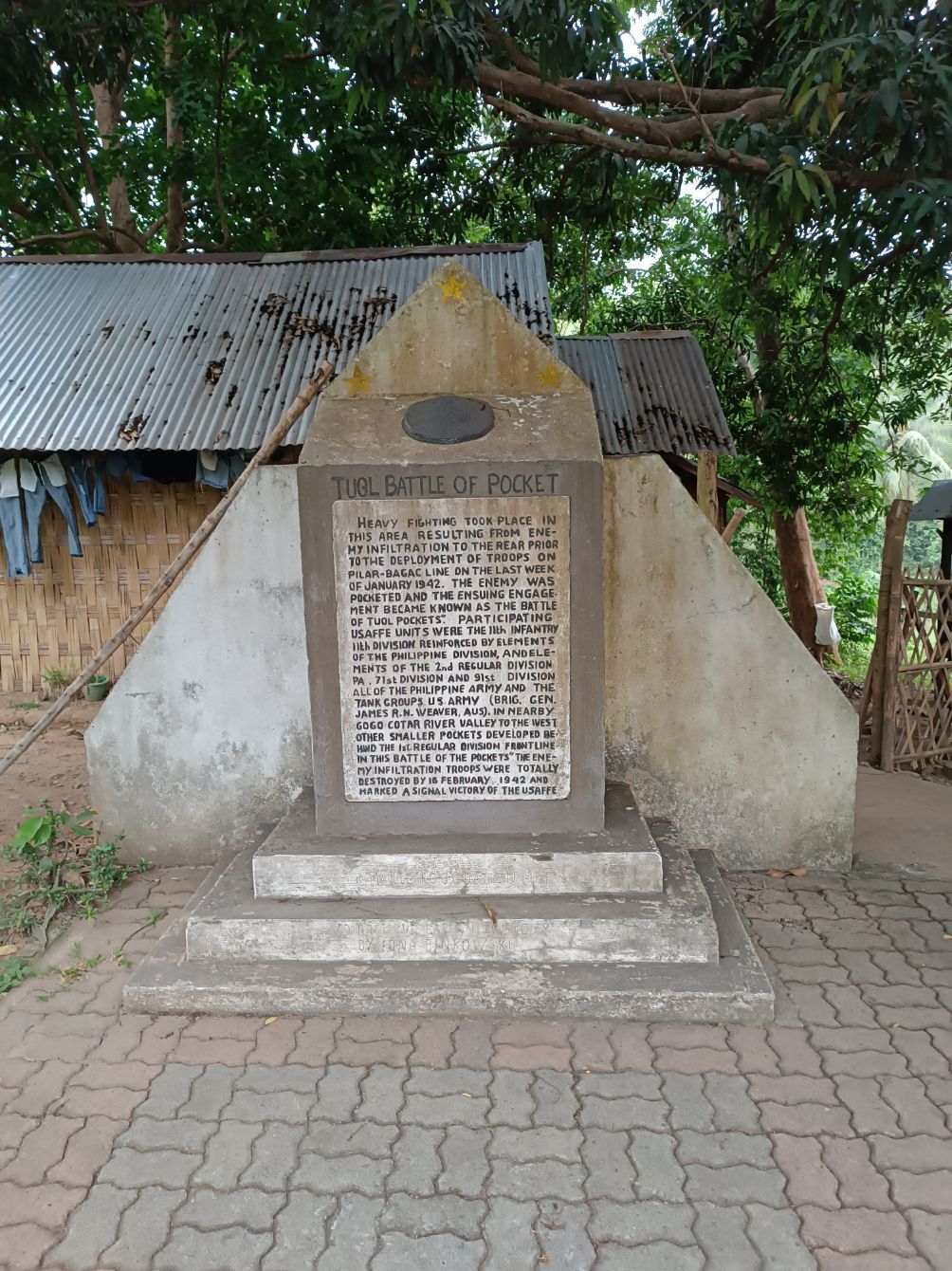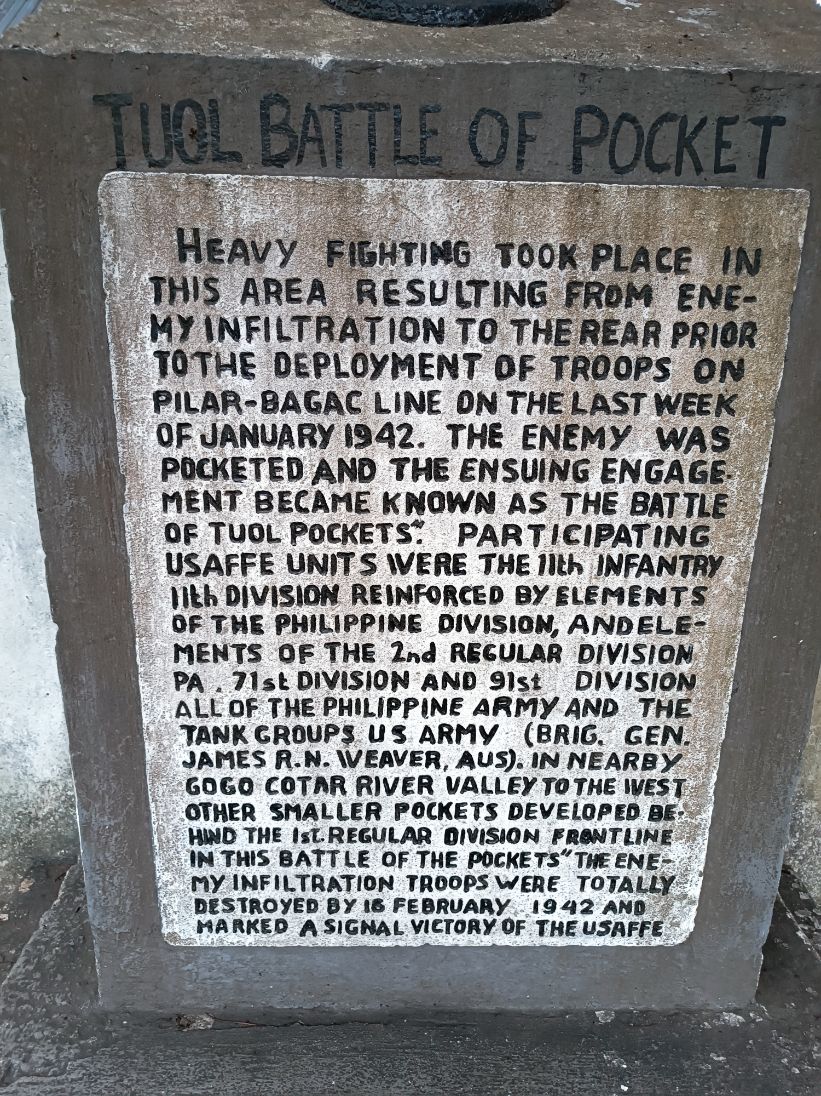The Battle of the Pockets Monument
Details:
On the north side of the road.
Monument
A rectangular block monument with a triangular top remembering the battle. The inscription is written in English in black lettering. At the top surface of the monument is a depiction of a black hat.
The remaining Japanese troops managed to get through, however, and held out at some rear sectors of the Orion-Bagac Line at the Tuol River Valley behind the 11th Division, and in the Gogo-Cotar River behind the 1st Regular Division. From 23 January to 17 February, coordinated action by the defenders to eliminate these salients of resistance became known as the "Battle of the Pockets". Fierce fighting marked the action. Captain Alfredo M. Santos, of the 1st Regular Division, outmaneuvered the enemy during their attempt to pocket the area. In both attempts, his unit successfully broke through the Gogo-Cotar and Tuol pockets, thus earning for himself the moniker "hero of the pockets". For his successes, he was promoted to major in the field. Major Santos was then given the hazardous mission of closing the gaps and annihilating the enemy troops who had infiltrated the lines, as the gap posed a serious threat to the positions and the security of the division. He led a counterattack against the strong and numerically superior Japanese forces positioned between the MLR and the Regimental Reserve Line (RRL). The fighting began at dawn on 29 January 1942, and the Americans restored the defensive sector assigned to the 1st Regular Division. On 3 February 1942, 1st Lieutenant Willibald C. Bianchi of the 45th Infantry, Philippine Scouts, led a reinforced platoon forward against two enemy machine-gun nests, silenced them with grenades, and then manned an antiaircraft machine gun until dying of his wounds. Of the 2,000 Japanese soldiers engaged, 377 were reported to have escaped.
General Homma, on 8 February, ordered the suspension of offensive operations in order to reorganize his forces. This could not be carried out immediately, because the 16th Division remained engaged trying to extricate the pocketed 3rd Battalion, 20th Infantry. With further casualties, the remnants of the 3rd Battalion, 378 officers and men, were extricated on 15 February. On 22 February, the 14th Army line was withdrawn a few miles to the north, with USAFFE forces re-occupying positions evacuated by the Japanese.
Source of information: en.wikipedia.org
Monument Text:
HEAVY FIGHTING
TOOK PLACE IN THIS AREA RESULTING FROM ENEMY INFILTRATION TO THE REAR PRIOR TO
THE DEPLOYMENT OF TROOPS ON PILAR-BAGAC LINE ON THE LAST WEEK OF JANUARY 1942.
THE ENEMY WAS POCKETED AND THE ENSUING ENGAGEMENT BECAME KNOWN AS THE BATTLE OF
TUOL POCKETS. PARTICIPATING USAFFE UNITS WERE THE 11th INFANTRY, 11th DIVISION
REINFORCED BY ELEMENTS OF THE PHILLIPPINE DIVISION, AND ELEMENTS OF THE 2nd
REGULAR DIVISION PA, 71st DIVISION AND 91st DIVISION, ALL OF THE PHILIPPINE
ARMY AND THE TANK GROUPS US ARMY (BRIG. GEN. JAMES R. N. WEAVER, AUS). IN
NEARBY GOGO COTAR RIVER VALLEY TO THE WEST OTHER SMALLER POCKETS DEVELOPED
BEHIND THE 1st REGULAR DIVISION FRONTLINE IN THIS BATTLE OF THE POCKETS"
THE ENEMY INFILTRATION TROOPS WERE TOTALLY DESTROYED BY 18 FEBRUARY 1942 AND
MARKED A SIGNAL VICTORY OF THE USAFFE.
Commemorates:
People:
Units:
11th Infantry (US) Philippine Division
71st Infantry (US) Philippine Division
91st Infantry (US) Philippine Division
United States Army
United States Army Forces in the Far East (USAFFE)
Wars:
WWII
Battles:
Bataan
Pacific Theater
Philippines Campaign (1941–1942)
Other images :



